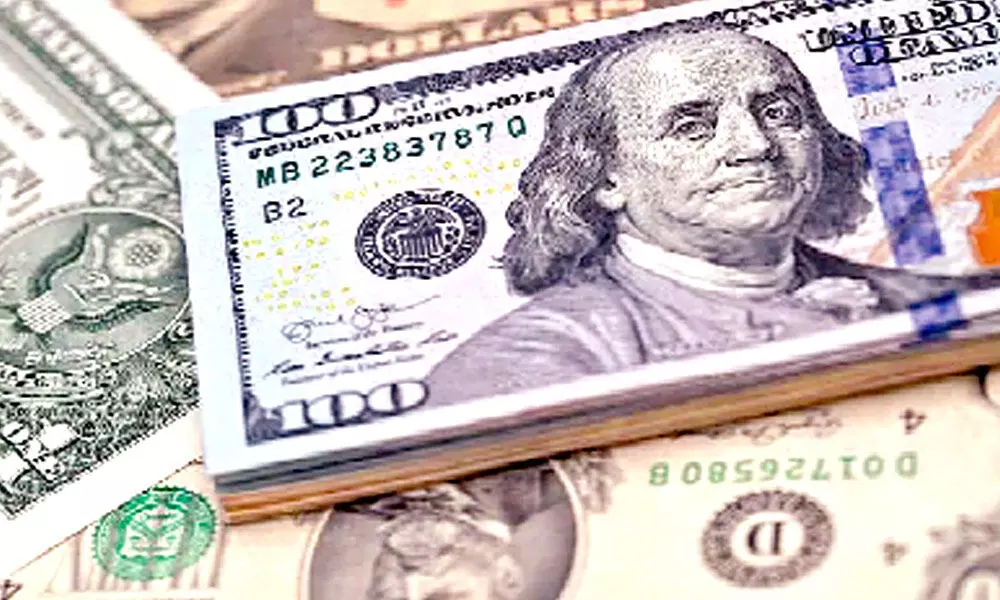The dollar's rebound may just be getting started
With US inflation rates consistently coming in higher than forecast and the current-account deficit - its excess of spending over saving – ballooning
image for illustrative purpose

Emerging-market currencies look especially vulnerable as growth and relative interest rates move in the greenback's favour
After a terrible 2020, the dollar has come roaring back this year. You'd be forgiven for thinking that strange, with US inflation rates consistently coming in higher than forecast and the current-account deficit - its excess of spending over saving - ballooning. On top of that, extraordinarily loose fiscal policy has flooded the world with dollars. Then there's the Afghanistan debacle, which has shown that the US is far from the force it once was, and certainly not one to be relied upon.
Yet I don't really see much reason to damp the enthusiasm for the currency that I articulated early this year. Currencies are relative, not absolute, prices: They are formed by economies' relative economic merits. Currency markets are also - or should be - forward looking. The question about the dollar should thus be reframed the following way: Are economic conditions likely to favour the US over its trading partners in coming months? On balance, the answer is yes. Some emerging currencies look especially very vulnerable.
Although the speed at which the current-account deficit has expanded is worrying, such shortfalls are not bad in themselves: they simply show the willingness of foreign investors to finance an economy's growth. Despite some recent softness, US economic growth prospects are better than those elsewhere.
Putting Covid-19 aside, the problems for the rest of the world really starts with China. Its economic success has relied on rapid credit growth, so whenever the economy has slowed, the government has leaned on banks to open the loan spigots. That game is ending. China's annual interest expense, as noted by independent economist Andrew Hunt, is now greater than the yearly increase in its nominal gross domestic product. Whether, in the long term, this results in an inflationary shock or Japanese-style debt deflation and austerity remains to be seen. Either way, real growth is slowing and this is starting to impact its trading partners.
China has already eased monetary policy at the margins. That it has not eased more is probably because of persistently high inflationary pressures. This should further weigh on growth, affecting Europe, which relies heavily on Asian demand for its growth, as well as many emerging economies that do brisk trade with China. For its part, the US relies far less on external demand.
Which brings us to relative interest rates. These, too, favour the dollar. Federal Reserve monetary policy at the moment is absurd. Deeply negative real rates are unjustifiable in an economy running as hot as America's. All they are doing is fostering excessive speculation, as evidenced by the stock and housing markets. They are also helping to fuel inflationary pressures. Despite consistently dovish signals from the Fed on inflation, there is now much less of a consensus on the wisdom of continuing its ultra-loose monetary policy. The longer this inflation surge lasts - and I'm pretty certain it will last, albeit probably not quite so dramatically - the more pressure builds on the Fed to end its bond purchases sooner rather than later. Short-dated rate expectations in the financial markets are also likely to head higher, thus boosting the dollar because European rates, to take one example, are unlikely to do anything at all.
Lastly, there is the supply of dollars to consider. The Fed has flooded the world with greenbacks to support the economy through the pandemic. One measure of the money supply, M2, has grown by $5.07 trillion, or about 33 per cent, since February 2020 to $20.5 trillion, according to data compiled by Bloomberg. This flood has eased somewhat in recent months but the effect of the Treasury Department running down its account at the Fed of late pretty much has the same effect of boosting monetary growth, meaning about $1.4 trillion dollars have been pushed into the market from such actions since late last year. The Treasury, however, is due to stop running down its account at the Fed this quarter.
With the supply of dollars soon to become more constrained, and relative economic growth and interest rates moving in its favour, the greenback is likely to get a boost. How sharp a boost will depend on the risk appetite of investors. You shouldn't be surprised is this concatenation of factors were to produce ructions in markets. If all this is likely to weaken the euro further, it makes some emerging currencies look even more perilous. The South African rand and the Turkish lira - neither of whose economies are beacons of economic probity or political harmony - are likely to fair very poorly. (Bloomberg)

